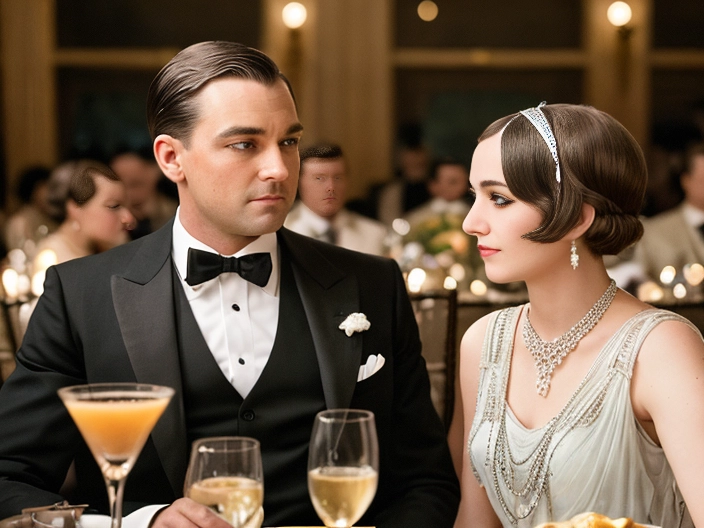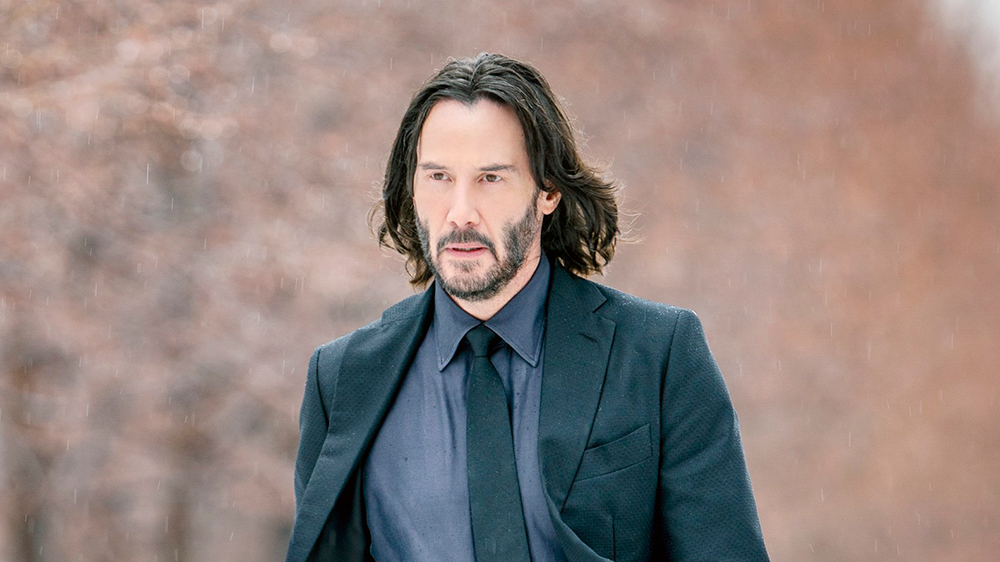Unmasking The Inspirations For The Great Gatsby: The Men Who Shaped Gatsby

Table of Contents
The Shadow of Jay Gatsby: Exploring the Real-Life Prototype(s)
The question of who inspired Gatsby isn't easily answered. There's no single definitive model; rather, Gatsby likely represents a composite character drawn from several real-life figures. Many believe Fitzgerald himself contributed to Gatsby's persona, blending elements of his own life and experiences into the character. This makes understanding Gatsby's inspirations a complex task, requiring investigation of multiple potential sources.
-
Potential Prototypes: The list of potential real-life prototypes is varied. It includes:
- F. Scott Fitzgerald himself: Fitzgerald's own ambition, his struggles to attain wealth and social acceptance, and his complex romantic relationships undeniably resonate within Gatsby's character.
- Bootleggers of the Roaring Twenties: The era's underworld figures, particularly wealthy and influential bootleggers, certainly provided inspiration for Gatsby's lavish lifestyle and mysterious past. The shadowy nature of their businesses provided a perfect backdrop for Gatsby's own enigmatic origins.
- Other social climbers and self-made men: Numerous individuals during the Jazz Age strived for social mobility and wealth, mirroring Gatsby's relentless pursuit of the American Dream and Daisy Buchanan's affections.
-
Biographical Connections: Fitzgerald's own experiences with wealth, social circles, and the pursuit of love heavily influenced Gatsby's narrative. The parallels between Fitzgerald's life and Gatsby's are undeniable, making him a primary candidate for shaping the character's core essence.
The Gilded Age Extravaganza: Reflecting the Roaring Twenties’ Excesses
Gatsby's extravagant parties and opulent lifestyle directly reflect the excesses of the Roaring Twenties. The Jazz Age was a period of unprecedented economic growth, but also immense social inequality. This era saw a surge in conspicuous consumption, with the wealthy flaunting their wealth in lavish displays. This societal context is crucial to understanding Gatsby's character.
- Excesses of the Jazz Age: The Roaring Twenties witnessed an unparalleled level of extravagance. Think lavish parties, extravagant spending on clothes, cars, and alcohol, and a general disregard for traditional societal norms.
- Real-Life Examples: Many real-life figures embodied this excess. Think of the wealthy socialites and industrialists who threw extravagant parties, mirroring Gatsby's famous gatherings. These events were not merely social gatherings; they were a display of power and status.
- Connection to Gatsby: Gatsby's parties serve as a direct reflection of this societal context. They are a desperate attempt to attract Daisy's attention and to prove his newfound wealth and social standing, demonstrating his desire for acceptance within this opulent world.
Love, Loss, and the American Dream: Examining Gatsby's Unrequited Passion
The Great Gatsby is fundamentally a story about love, loss, and the elusive American Dream. Gatsby's unwavering pursuit of Daisy is a tragic illustration of the unattainable nature of this dream. Fitzgerald's own romantic struggles likely informed Gatsby's obsessive longing.
- Fitzgerald's Romantic Life: Fitzgerald's turbulent relationship with Zelda Sayre provides a compelling parallel to Gatsby's pursuit of Daisy. The complexities of their relationship, marked by both passion and frustration, likely shaped Gatsby's longing and ultimate disillusionment.
- Societal Expectations: Gatsby's pursuit of Daisy is hampered by the rigid societal expectations of the time. His "new money" status contrasts sharply with Daisy's "old money" background, highlighting the social barriers he struggles to overcome.
- American Dream Disillusionment: Gatsby's relentless pursuit of wealth is inextricably linked to the American Dream. However, his success ultimately fails to bring him happiness, suggesting that the idealized vision of success and fulfillment is often unattainable.
The Enigma of Gatsby's Past: Unveiling the Mysterious Origins
Gatsby's mysterious past is a crucial element of his character. This ambiguity mirrors the lives of many individuals during the Roaring Twenties, who often cultivated carefully constructed public personas to mask their true origins or pasts.
- Constructed Personae: The era was ripe for self-invention. Many individuals, particularly those involved in less-than-legal activities, crafted carefully constructed public images to avoid scrutiny.
- Self-Made Status: Gatsby's self-made status embodies the American Dream's allure and its potential for self-invention, but also its inherent limitations and potential for deception.
- Adding to the Mystique: The opaqueness surrounding Gatsby's past contributes significantly to his enigmatic charm and ultimate tragic downfall. It's a testament to the allure and danger of a life built on illusion.
The Enduring Legacy of Gatsby's Inspirations
In conclusion, Jay Gatsby's character is a rich tapestry woven from the threads of real-life figures and the historical context of the Roaring Twenties. The complexities of his persona, his extravagant lifestyle, and his tragic pursuit of love all find their roots in the era's excesses and the ambitions of those who sought to define themselves within it. Gatsby's enduring appeal lies in his representation of both the allure and disillusionment of the American Dream, a theme that resonates even today. To further understand Gatsby's enduring legacy, delve deeper into the historical context of the Roaring Twenties and explore the lives of the men who may have influenced F. Scott Fitzgerald's masterpiece. Discover more about Gatsby's inspirations, the real-life Gatsby, and the influences on The Great Gatsby to fully appreciate this timeless classic.

Featured Posts
-
 Boris Dzhonson Rezko Kritikuet Mirniy Plan Trampa
May 12, 2025
Boris Dzhonson Rezko Kritikuet Mirniy Plan Trampa
May 12, 2025 -
 Ufc 315 Muhammad Vs Della Maddalena Prediction And Betting Odds
May 12, 2025
Ufc 315 Muhammad Vs Della Maddalena Prediction And Betting Odds
May 12, 2025 -
 The Case Against John Wick 5 Why Its Time To Stop
May 12, 2025
The Case Against John Wick 5 Why Its Time To Stop
May 12, 2025 -
 Henry Cavill Wolverine Casting World War Hulk Movie Possibilities
May 12, 2025
Henry Cavill Wolverine Casting World War Hulk Movie Possibilities
May 12, 2025 -
 Office365 Breach Nets Millions Insider Reveals Details Of Executive Targeting
May 12, 2025
Office365 Breach Nets Millions Insider Reveals Details Of Executive Targeting
May 12, 2025
Latest Posts
-
 Ukrayinskiy Konflikt Kritika Mirnogo Planu Trampa Borisom Dzhonsonom
May 12, 2025
Ukrayinskiy Konflikt Kritika Mirnogo Planu Trampa Borisom Dzhonsonom
May 12, 2025 -
 Dzhonson Proti Trampa Rizni Pidkhodi Do Mirnogo Vregulyuvannya Viyni V Ukrayini
May 12, 2025
Dzhonson Proti Trampa Rizni Pidkhodi Do Mirnogo Vregulyuvannya Viyni V Ukrayini
May 12, 2025 -
 Lowrys Support For Mc Ilroy Despite Masters Final Round Setback
May 12, 2025
Lowrys Support For Mc Ilroy Despite Masters Final Round Setback
May 12, 2025 -
 Chi Mozhlivi Mirni Peregovori Analiz Pozitsiy Dzhonsona Ta Trampa Schodo Ukrayini
May 12, 2025
Chi Mozhlivi Mirni Peregovori Analiz Pozitsiy Dzhonsona Ta Trampa Schodo Ukrayini
May 12, 2025 -
 Shane Lowry On Rory Mc Ilroys Masters Victory A Friends Triumph
May 12, 2025
Shane Lowry On Rory Mc Ilroys Masters Victory A Friends Triumph
May 12, 2025
